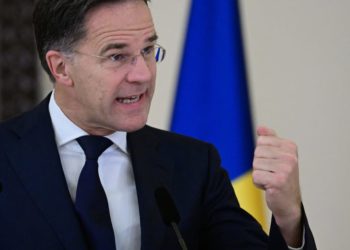The Supreme Court on Wednesday is set to consider the legality of President Trump’s sweeping use of emergency powers to impose many of his tariffs.
At issue is a 1977 law that gives the president broad economic powers during a national emergency, known as the International Emergency Economic Powers Act. Mr. Trump has invoked the law to justify import taxes on dozens of trading partners.
Mr. Trump used the law in April to levy global tariffs, including on some of America’s closest allies. He issued them by declaring a national emergency over the “large and persistent” trade deficit that the United States runs with the rest of the world. The president said trade deficit — the gap between what America exports and imports — reflected unfair trade relationships that have hollowed out U.S. manufacturing.
The president also used the law in February to hit Mexico, Canada and China with levies because he said that they had not done enough to stop the flow of migrants and illegal fentanyl into the United States.
Mr. Trump’s tariffs were challenged in court by a dozen states, along with small businesses that argued the import taxes hurt their bottom lines. The challenges reached the Supreme Court after lower courts ruled that the emergency statute did not give the president authority to impose tariffs of that magnitude, but allowed the levies to remain while litigation continued.
What is IEEPA?
The International Emergency Economic Powers Act gives the president broad powers to regulate financial transactions upon declaring a national emergency. Under the law, presidents can take many economic actions “to deal with any unusual and extraordinary threat, which has its source in whole or substantial part outside the United States, to the national security, foreign policy or economy” of the country.
Presidents have used the law to impose sanctions, justify export controls and restrict some transactions and outbound investment, said Kelly Ann Shaw, a partner at the law firm Akin Gump and a former economic adviser to the Trump administration.
But legal experts have questioned a president’s authority to use IEEPA to impose tariffs. No president before Mr. Trump used IEEPA to put tariffs on imported goods, according to a recent Congressional Research Service report.
Instead, presidents have imposed tariffs in response to national security threats using Section 232 of a 1962 trade law. That legal provision differs from IEEPA because it requires an investigation and report that must be issued within 270 days. The provision also focuses on imports that “threaten to impair” U.S. national security.
Congress passed IEEPA to restrict the emergency economic powers granted to the president under the Trading with the Enemy Act, a 1917 law that gave the president expansive authority to regulate international transactions during wartime. President Richard M. Nixon used the precursor statute to briefly impose a 10 percent universal tariff in 1971.
Some scholars have questioned whether IEEPA grants the president “unchecked executive authority in the economic realm,” according to the C.R.S. report. Others say IEEPA is an effective foreign policy tool that allows the president to rapidly carry out the will of Congress.
“This is a very broad tool that affords the president a lot of latitude to impose potentially really substantial economic costs on partners,” said Philip Luck, the economics program director at the Center for Strategic and International Studies and a former deputy chief economist at the State Department during the Biden administration. “This is a pretty big stick you can use.”
How has Mr. Trump used the law?
During his first term, Mr. Trump threatened to impose tariffs on Mexico using his authorities under IEEPA. In May 2019, he said that he would use the law to impose a 5 percent tariff on all goods imported from Mexico and gradually increase it to 25 percent unless Mexico alleviated “the illegal migration crisis.”
In June 2019, Mr. Trump backed down from the threat after the United States reached an agreement with Mexico to stem the flow of migrants to the southwestern border.
Mr. Trump did use the authority, though, to impose sanctions against other countries. Mr. Trump used IEEPA to penalize Venezuela’s state-owned oil company and impair the government of President Nicolás Maduro by cutting off its main source of cash. He also used the law to impose sanctions on Iran in retaliation for what the administration said were aggressive acts by Tehran.
In June 2020, Mr. Trump invoked the law to authorize sanctions on top officials at the International Criminal Court after the court opened an investigation into potential war crimes by American troops in Afghanistan. President Joseph R. Biden Jr. later revoked that executive order.
How have other presidents invoked IEEPA?
In April 2015, President Barack Obama used IEEPA to authorize sanctions against foreign-based hackers targeting the United States. In September 2001, after the Sept. 11 terrorist attacks, President George W. Bush used IEEPA to impede the financial support network for terrorist organizations by authorizing the United States to block the assets of foreign individuals who commit acts of terrorism.
As of Jan. 15, presidents had declared 69 national emergencies invoking IEEPA, according to the C.R.S. report. Historically, these national emergencies lasted nearly a decade. Thirty-nine of the national emergencies were still in effect, according to the report.
Madeleine Ngo covers U.S. economic policy and how it affects people across the country.
The post What is IEEPA, the Law Trump Used to Levy Tariffs? appeared first on New York Times.




